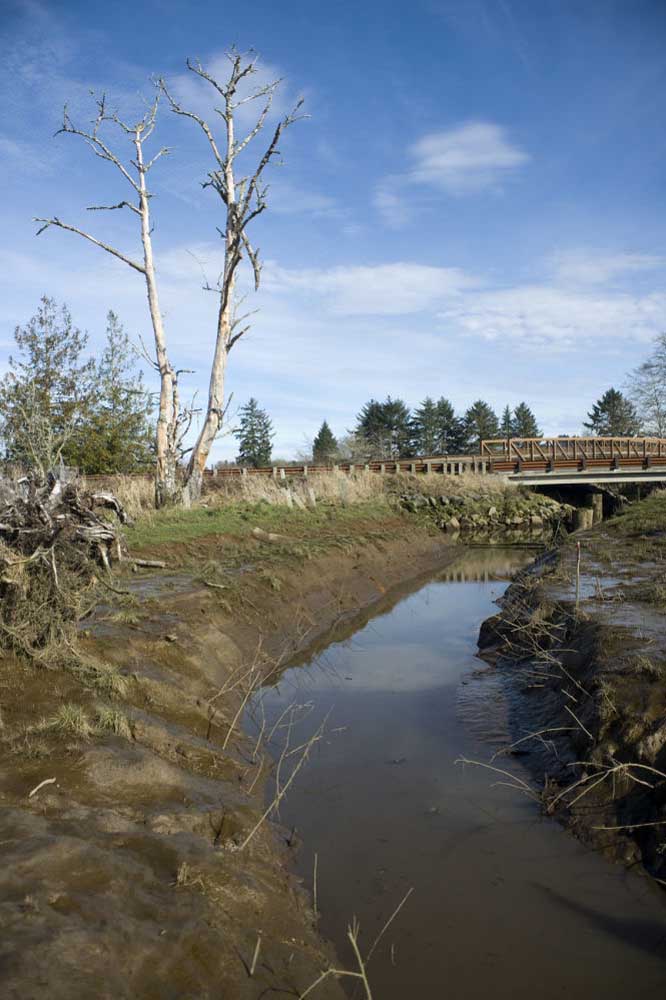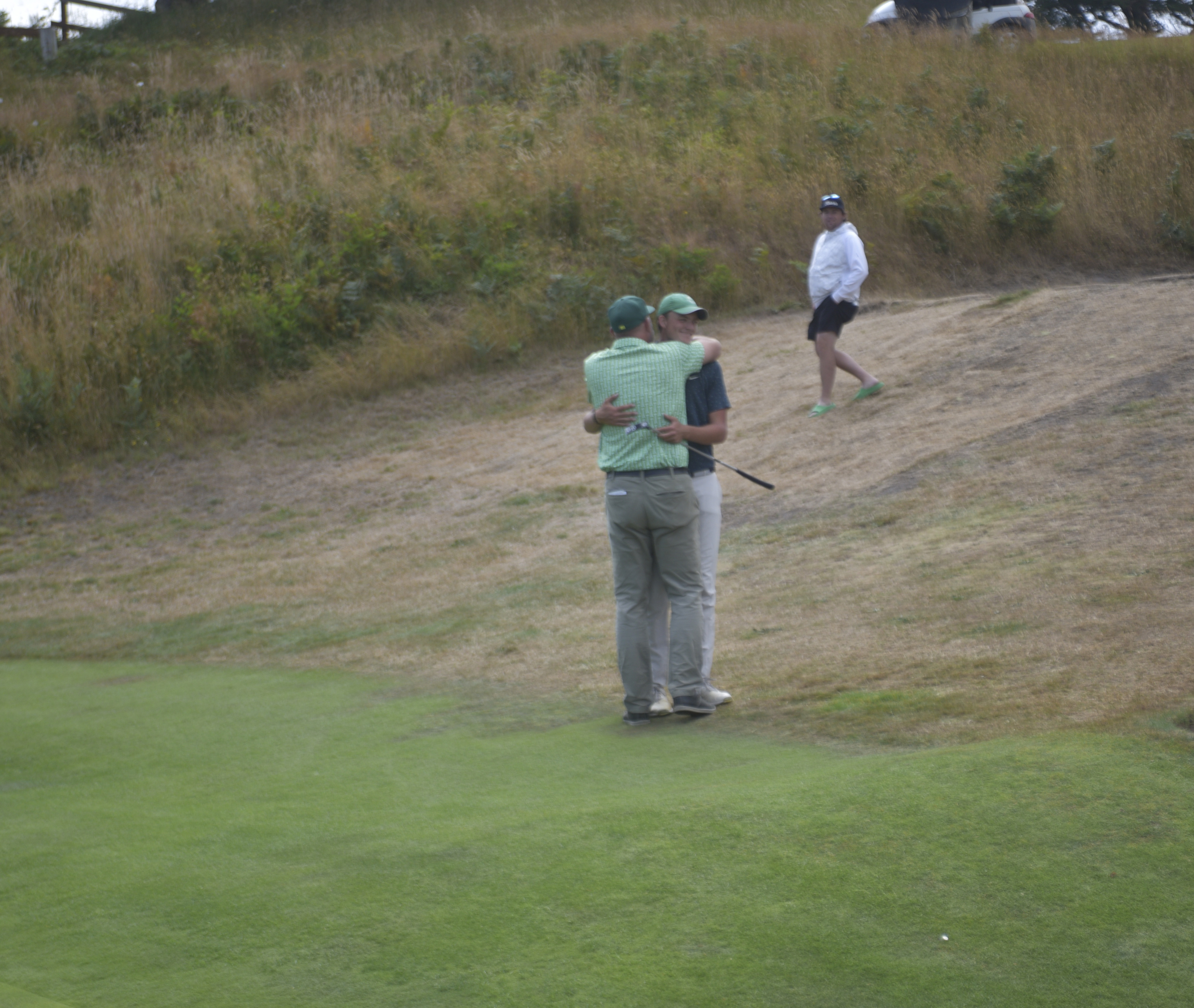National Park restores natural feel – with some help
Published 4:00 pm Wednesday, February 26, 2014

- <p>A stretch of Colewort Creek at low tide, drains into the Lewis and Clark River. The bare, muddy banks of the channel offer little protection to salmon.</p>
WARRENTON It takes a lot of excess wood debris to create a welcoming estuary for salmon, steelhead and cutthroat trout.
Trending
That material can be expensive unless someone else is getting rid of it.
Large stumps, logs and native plants are being placed at Colewort Creek this week as part of a collaborative effort to restore the Lewis and Clark National Historical Park site. The salvaged wood material came from High Life Adventures and a development site in Warrenton owned by Bob White of Whites Heating & Sheet Metal.
We get all this great amazing material that would normally cost a lot of money for free, said Carla Cole, natural resources program manager at Fort Clatsop.
Trending
The discarded wood debris provides fish with shade, shelter from predators and draws insects to eat. The vegetation can also support migratory birds as well as amphibians.
This is where the material that would have been lost is getting recycled and repurposed as high-functioning habitat, said Doug Ray, a wetlands consultant who owns Carex Consulting in Seaside and consulted White on the development in Warrenton.
Protecting
Dump truck loads of vegetation are headed to Colewort Creek and Otter Point. Its one of many methods the park is trying to restore the native feel, said Cole, which includes protecting plants from elk with enclosures.
In 2012, the tidal channels at the restoration site were carved out. They were bare and didnt provide much protection for salmon. But they are looking much different now, with muddy organic debris strewn about for fish to call home for a while before heading out to sea.
Its full of hiding places and also the fine surfaces start growing biofilm which kicks off the whole underwater food web, said Cole.
The current project is similar to what has been done before by placing recycled Christmas trees in the water.
Theyre both different ways of bringing more wood back into the system, Cole said. This is just doing it on a larger scale and a more immediate benefit.
Collaboration works
Spruce tree stumps were placed in the channels Tuesday using an excavator operated by Dave Larson of Larson Construction, who also co-owns High Life Adventures with his wife Lancey.
Im excited to be a part of it, said Larson of the project. Ive watched this ongoing program and Im seeing immediate benefits.
I think its real positive to be a part of that, Larson said, adding that hes happy to be able to give back to Fort Clatsop. Theyre such an asset to this community.
White and High Life Adventures can claim the transfer of the material as a charitable donation. Disposing of the wood themselves would been costly. Cole said she would like to see this type of collaboration become more common.
For me, Im very excited to see it here, but theres so much opportunity for this in the area with the development going on and restoration going on at the same time, she said. Im hoping this will happen more and more.
Salmon is a big drive for projects at the park, but the goal is to also restore the land to what it was like when Lewis and Clark first gazed upon it.
Our over-reaching park goal is to restore the native cultural landscape and functioning ecosystems in their entirety where ever we can, said Cole. Theres an intrinsic benefit to us in simply having an intact native plant community in place.
Tracking salmon
The park isnt permitted to do fish sampling at the site right now, Cole said, but young salmon have been spotted.
The site is being updated to passively monitor fish entering the channels using PIT tags, rice-size electronic transponders showing which upriver hatchery a fish is from.
Six antennas will be placed to pick up the signals from the fish that swim by them after passing underneath Fort Clatsop Road and entering the Colewort Creek site.
Funding for projects like Colewort comes from the idea that upriver fish will utilize the brackish estuary before heading to the ocean, Cole said. But the projects are also for local fish as well.
Jason Smith, a habitat biologist with the Columbia River Estuary Study Taskforce (CREST), said there is a push to do less handling of juvenile fish and do electronic monitoring instead.
This is kind of a passive way so we dont have to handle the fish, but we can still track or monitor their presence, he said.
The first year, there were a lot of fish registering at the site, but equipment was damaged and hasnt been working at full capacity, Smith said.
There have been coho, chinook, chum, steelhead and cutthroat trout using the restoration site. The monitoring equipment doesnt tell the whole story because it only registers hatchery chinook salmon, but biologists will at least have an idea of how useful Colewort is to fish.
Were assuming that if the site is suitable for chinook, that its also suitable for the other species, said Smith.









